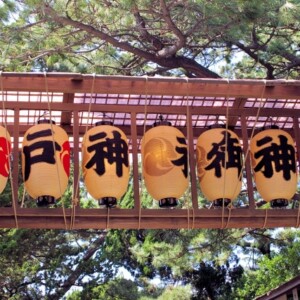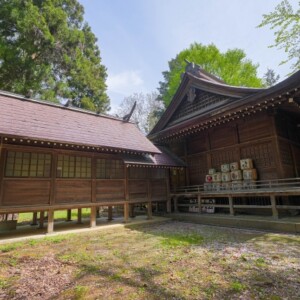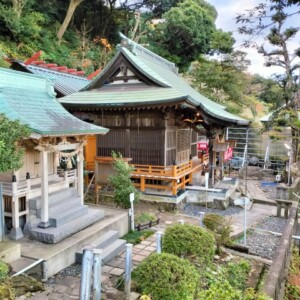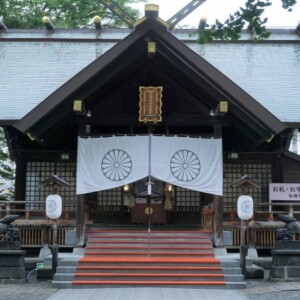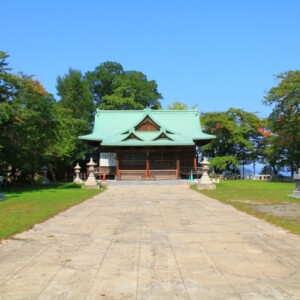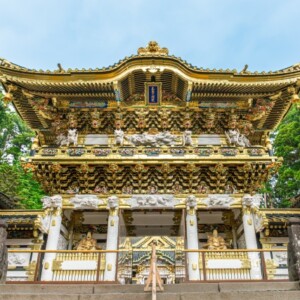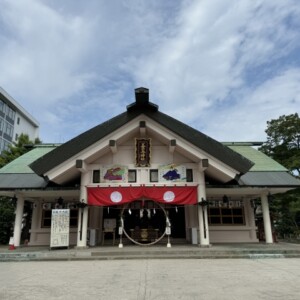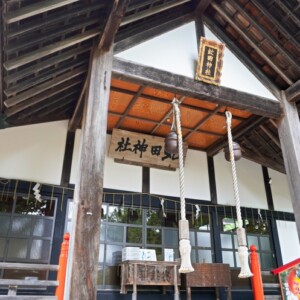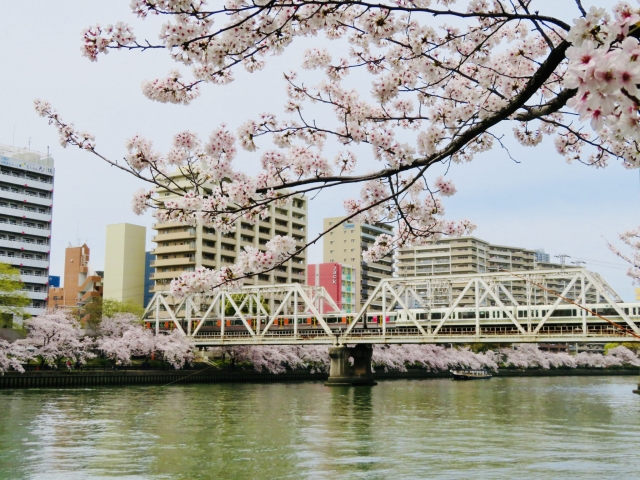
Kema Sakuranomiya Park|Complete guide to the water and cherry blossom viewing spots along the Ookawa River, walking and jogging trails
Kema Sakuranomiya Park, stretching 4.2 km along the Okawa River that flows through Osaka City, is lined with 4,800 cherry trees and is one of the best cherry blossom viewing spots in the Kansai region. Citizens are constantly seen strolling and jogging through the four seasons in this river park, where they can enjoy the symbolic scenery of the water city Osaka.
Outline and Basic Information on Kema Sakuranomiya Park
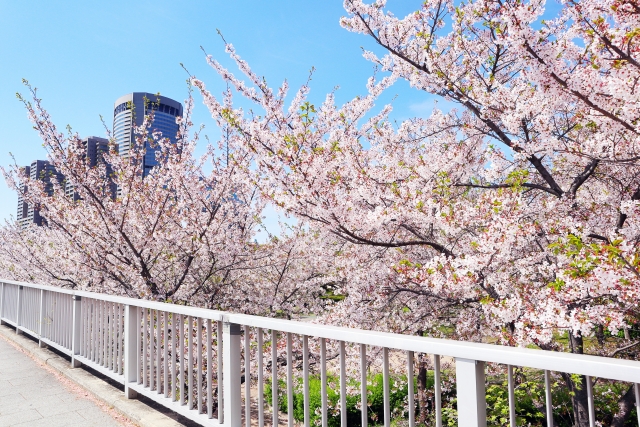
Mouma Sakuranomiya Park is an urban park that utilizes the riverbed extending from the Mouma weir on the Okawa River to the Tenmabashi Bridge downstream. The park is officially designated as Mouma Sakuranomiya Park together with Minamitenma Park, Mouma Park, and Kabura Park in the city planning, and is a comprehensive park straddling Miyakojima Ward and Kita Ward in Osaka City. The park has a water plaza, walking trails, children’s playground, and other facilities, and is loved by many citizens as a place for relaxation and recreation.
History and Origin
The history of Kema Sakuranomiya Park can be traced back to the Yodogawa River repair work in the Meiji era. Both banks of the Okawa River near Sakuragiya had been famous for cherry blossoms since the Edo period (1603-1868), but after the Yodo River flood of 1885 (Meiji 18) devastated the cherry trees on the east bank, the cherry trees on the west bank, especially those of the Mint Bureau, became famous.
The foundation of the present park was laid by the Yodogawa River improvement project that began in 1896, including the opening of the Shin-Yodogawa River. This large-scale flood control project led to the construction of the Mouma Weir and Mouma Locks to control the amount of water flowing from the Yodo River to the Okawa River, and to the development of the riverbed. The project at that time is known as the Yodogawa River Improvement Project (1897-1943), the first full-scale flood control project in Japan, and laid the foundation for the present water and green landscape.
Background of Park Development Utilizing the Ookawa Riverbed
The development of Kema Sakuranomiya Park was a pioneering effort to combine a flood control project with its function as an urban park. Along the Nakatsu River, downstream of the Yodo River, the Shin Yodo River was excavated from Sata to its mouth, a distance of approximately 16 km. In conjunction with this, weirs were constructed at Kema, at the entrance to what is now the Ookawa River (formerly the Yodo River), and a flume was constructed at Kanzaki River to ensure water flow in both rivers and prevent sediment from entering the rivers.
The riverbed secured by this construction was later developed into a park. The stabilization of the Ookawa River’s water volume made it possible to use land along the river, creating space for citizens to enjoy the waterfront. Today, approximately 4,800 cherry trees have been planted, creating a beautiful landscape that turns the river surface light red in spring.
The achievements of the engineers involved in the river improvement are commemorated in the Yodogawa River Repair Monument, which stands beside the Mema No. 1 Locks and continues to convey the history of the river in the park.
Highlights and Features of Mema Sakuranomiya Park
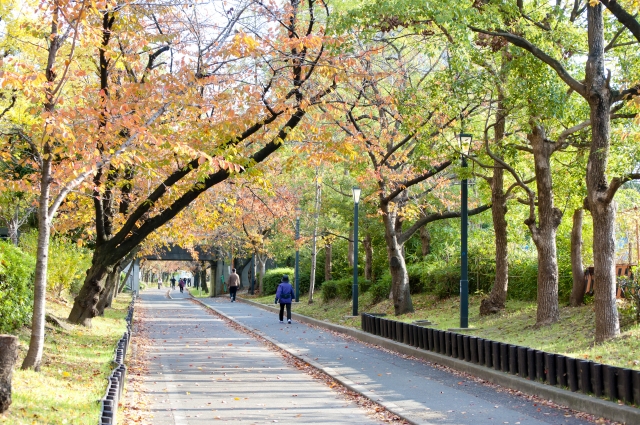
The most attractive feature of Mouma Sakuranomiya Park is its waterside scenery that is integrated with the flow of the Okawa River. Although located in an urban area, the park retains a rich natural environment, and the harmony with the historical buildings creates a beautiful view.
Approximately 4,800 cherry blossom trees and cherry blossom viewing spots
Kema Sakuranomiya Park is known as one of the best cherry blossom viewing spots in Kansai, with approximately 4,800 cherry trees of many varieties, including Someiyoshino, Yamazakura, Kanhizakura, Kanzakura, Jidarezakura, and Oshimazakura, all in bloom from late March to early April, turning the river surface a light red color.
The rows of cherry trees stretch 4.2 km along the Okawa River, and the walking paths in the park resemble a tunnel of cherry trees, allowing visitors to enjoy a leisurely stroll while feeling the gentle river breeze. In particular, the view of the flowers reflected on the surface of the river is described as breathtaking.
Many people visit during the cherry blossom viewing season, and can be seen enjoying the blossoms at various locations along the riverbed. One of the features of this area is that visitors can enjoy cherry blossoms over a long period of time due to the abundance of different types of cherry trees, which bloom at different times of the year.
Attractions of Okawa Riverside Landscape and Rivers
The unique feature of Mouma Sakuranomiya Park is the landscape integrated with the river. The Ookawa River running alongside Mouma Sakuranomiya Park is home to many boats, including water buses, houseboats, and motorboats. You can enjoy just looking at the various boats that pass by.
The river beach “Osaka Fureai no Mizu-beach” is located in the park, and visitors can enjoy playing in the water at the man-made river beach, which is rare in urban areas. The park also has a practice area for the university’s rowing team, and students rowing boats can be seen here, a sight that is unique to the waterfront area.
Visitors can enjoy beautiful scenery throughout the four seasons, and especially in the fall, they can appreciate the beauty of the autumn leaves, which are different from the cherry blossoms.
Mint Bureau, Senpukan and other historical buildings
One of the main features of Kema Sakuranomiya Park is the line of buildings along the right bank of the Okawa River that are representative of the early Meiji period, including the Mint Bureau and Senpukan. These historical buildings add a retro charm to the view from the park and are an important attraction during a stroll.
The Mint Museum, a brick Western-style building built in 1911, displays valuable coins and other items. The museum is open for tours on weekdays, so visitors can enjoy learning about history as they stroll through the park.
Also, the pond near the Sakuranomiya Bridge is a great spot for taking pictures of lotus blossoms in yellow, overlooking the Mint Bureau and the Mint Museum on the other side of the river. Visitors can enjoy the typical scenery of the water city Osaka, where buildings from the Meiji era and modern urban landscape are in harmony.
Walking/Jogging Guide
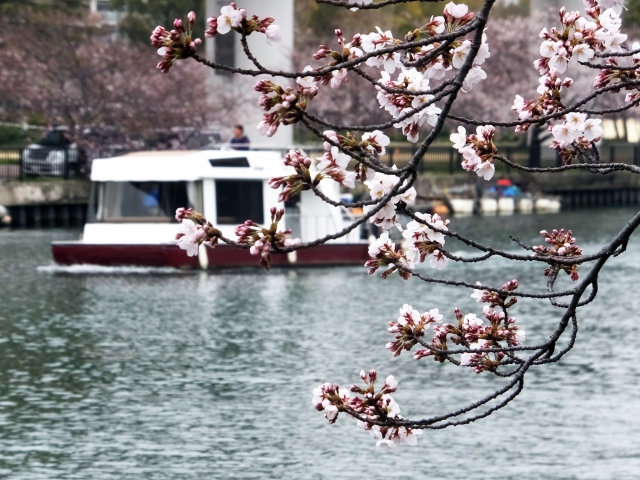
Kema Sakuranomiya Park is loved by people who enjoy strolling and jogging, taking advantage of its characteristics as a riverside park extending 4.2 km. The promenade along the flow of the Okawa River allows visitors to enjoy exercise and strolling while feeling the refreshing breeze along the water’s edge.
Strolling Course and Points for Enjoyment
The basic walking course in Mouma Sakuranomiya Park is approximately 4.2 km from the Mouma washing weir to Tenmabashi Bridge. Walking from one end to the other, the course is a great exercise and allows visitors to feel the history and nature of Miyakojima Ward amidst beautiful scenery.
There are several attractions scattered throughout the park, and near the Kema Bridge is a children’s playground with playground equipment. With a large number of slides, a sandbox, and iron bars, the playground can be enjoyed by children of all ages. What is unique about the playground is that it is equipped with a number of panda playground equipment, so much so that it is called “Panda Park” by the locals.
Facilities such as the Sakuranomiya Baseball Stadium and the Fujita Residence Site Park are also located along the walking route, allowing visitors to stop by and enjoy themselves at their leisure. The Fujita Residence Site Park was developed from a part of the residence of Denzaburo Fujita, a businessman of the Meiji era, and has a magnificent Japanese garden.
Seasonal Highlights and Best Season
The most attractive thing about Kema Sakuranomiya Park is that it has a different look each season. The cherry blossom season in spring (late March to mid-April) is the most popular, and visitors can enjoy the spectacular view of approximately 4,800 cherry trees, which turn the river surface light red. The many varieties of cherry trees, including someiyoshino, yamazakura, and satozakura, are planted here, so the blooming time differs, allowing visitors to enjoy the cherry blossoms over a long period of time.
In summer, visitors can stroll around the park while enjoying the lush green scenery and the coolness of the waterside. In autumn, the cherry trees turn beautiful red, and in winter, the flow of the Okawa River can be seen more clearly over the rows of deciduous cherry trees. The park is always open throughout the year, making it easy to visit at any time.
The walking path in the park is like a tunnel of cherry blossoms, and visitors can enjoy a leisurely stroll while feeling the gentle river breeze. The view of the flowers reflected on the river surface is especially breathtaking, and is a popular spot for many photographers and tourists.
River Beach “Osaka Fureai no Mizuhebi
Osaka Fureai no Mizu-beach (Sakuranomiya Beach), an artificial river beach, is located in Kema Sakuranomiya Park, which is rare in an urban area. This artificial sandy beach (140 m wide by 30 m deep) was created as a symbolic space of the water city Osaka, utilizing the former lumberyard in Mema Sakuranomiya Park on the left bank of the Okawa River (formerly the Yodo River) to create a new waterfront attraction.
The beach is open from 8:00 a.m. to 6:00 p.m. throughout the year (8:00 a.m. to 8:00 p.m. from June 1 to September 30), and anyone can freely use this waterfront space. It is rare to find a space where visitors can experience the charm of the waterfront by directly touching the river in a city center with many vertical seawalls, and visitors can enjoy the waterfront in a variety of ways, such as canoeing, paddle boarding, nature observation on the sandy beach, and beach sports.
Although it is not a swimming area and swimming is not allowed, visitors can enjoy playing in the sand on the beach, viewing cherry blossoms in full bloom in the spring, and relaxing. There is also a place to wash your feet, so you don’t have to worry about getting your feet dirty in the sand. The beach is also used for various sporting events such as beach volleyball and triathlons, making it a valuable facility where you can enjoy a beach atmosphere even in an urban area.
Access and Use Information
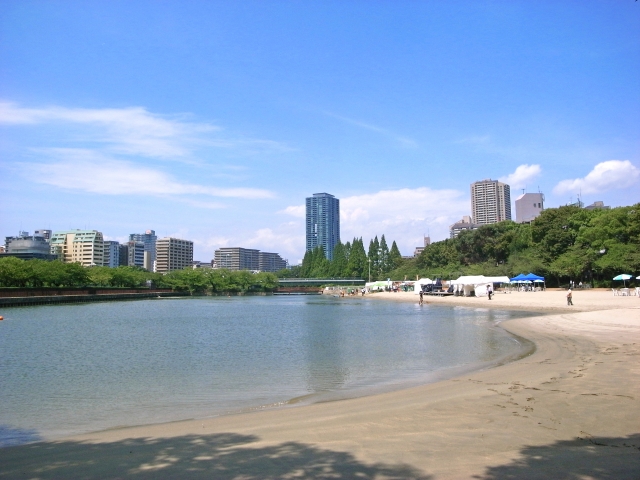
Kema Sakuranomiya Park is conveniently located within easy access from the center of Osaka City, and is accessible on foot from several stations. The park is also close to Umeda and other central Osaka locations, making it easy to visit while sightseeing or shopping.
Transportation Access
Mema Sakuranomiya Park is most conveniently accessible by train. The main access stations are as follows
Sakura-no-miya Station on the JR Osaka Loop Line is the most accessible station, being a short walk away; Osaka-jo Kitazume Station on the JR Tozai Line is also a short walk away.
From subways and private railways, Tenmabashi Station on the Osaka Metro Tanimachi Line and Keihan Main Line is about a 5-minute walk away. Tenmabashi Station is located at the southern end of the park, making it convenient if you begin your walk from the Tenmabashi side.
Since the park is 4.2 km long, we recommend that you choose which station to use depending on the purpose of your visit and your walking schedule. Sakuranomiya Station is located in the central part of the park and is conveniently close to major facilities such as the Osaka Fureai Waterfront.
Information on opening hours, fees, parking, and nearby facilities
Kema Sakuranomiya Park is always open and can be used 24 hours a day, 7 days a week. Admission is free and everyone is welcome to use the park. The park is open 24 hours a day, 7 days a week.
However, since there is no parking lot, public transportation is recommended. Paid parking is available in the vicinity, but public transportation is recommended for environmental reasons, as access by train is convenient.
As for the park facilities, a children’s playground is located near the Kema Bridge, providing an enjoyable environment for children. In addition, softball and softball are available at the Sakuranomiya Baseball Ground, and advance reservations are required.
Fujita Residence Site Park is open from 10:00 to 16:00 (closed during the year-end and New Year holidays), so visitors should pay attention to the hours when enjoying the Japanese garden.
For inquiries, contact Ogimachi Park Office (TEL: 06-6312-8121) for the Kita-ku portion and Tsurumi Ryokuchi Park Office (TEL: 06-6912-0650) for the Miyakojima-ku portion.
<Address> 1-chome, Nakano-cho, Miyakojima-ku, Osaka 530-0025, etc. (including Tenma, Kita-ku)
Reference site
Osaka City Flower and Greenery Information Site Mouma Sakuranomiya Park: https://www.osakapark.osgf.or.jp/kema_sakuranomiya/
OSAKA-INFO Mouma Sakuranomiya Park: https://osaka-info.jp/spot/kema-sakuranomiya-park/
Osaka Fureai no Mizuube (Osaka Fureai Waterfront): https://www.pref.osaka.lg.jp/o070080/toshimiryoku/mizubeinfo/fureai.html



